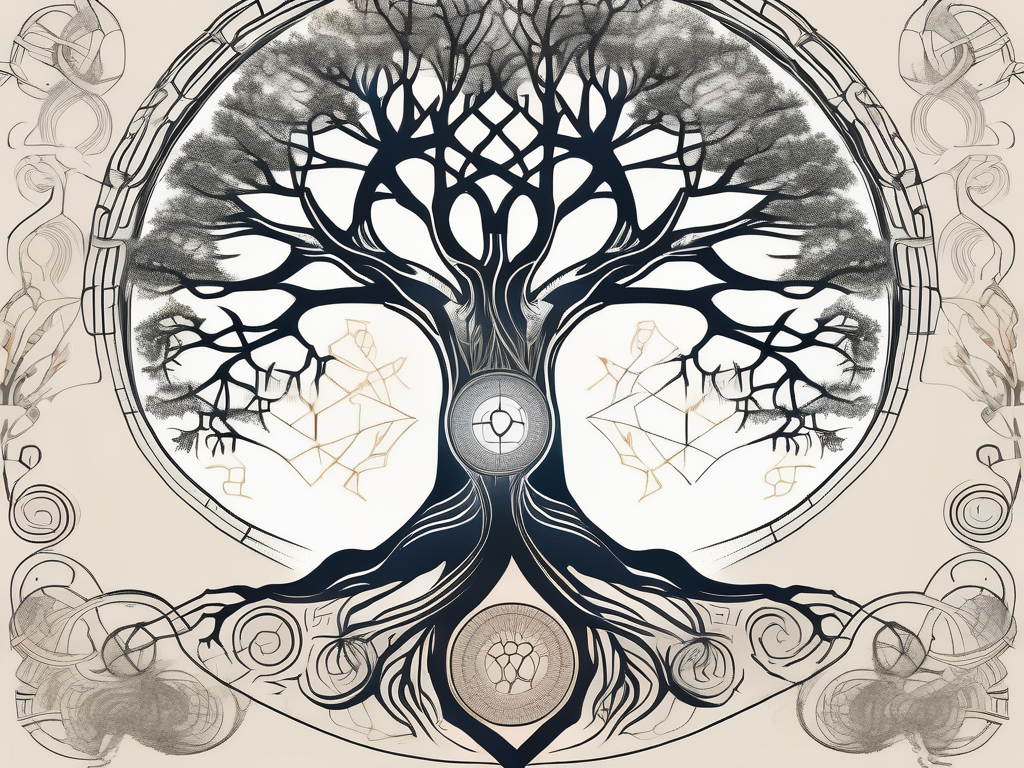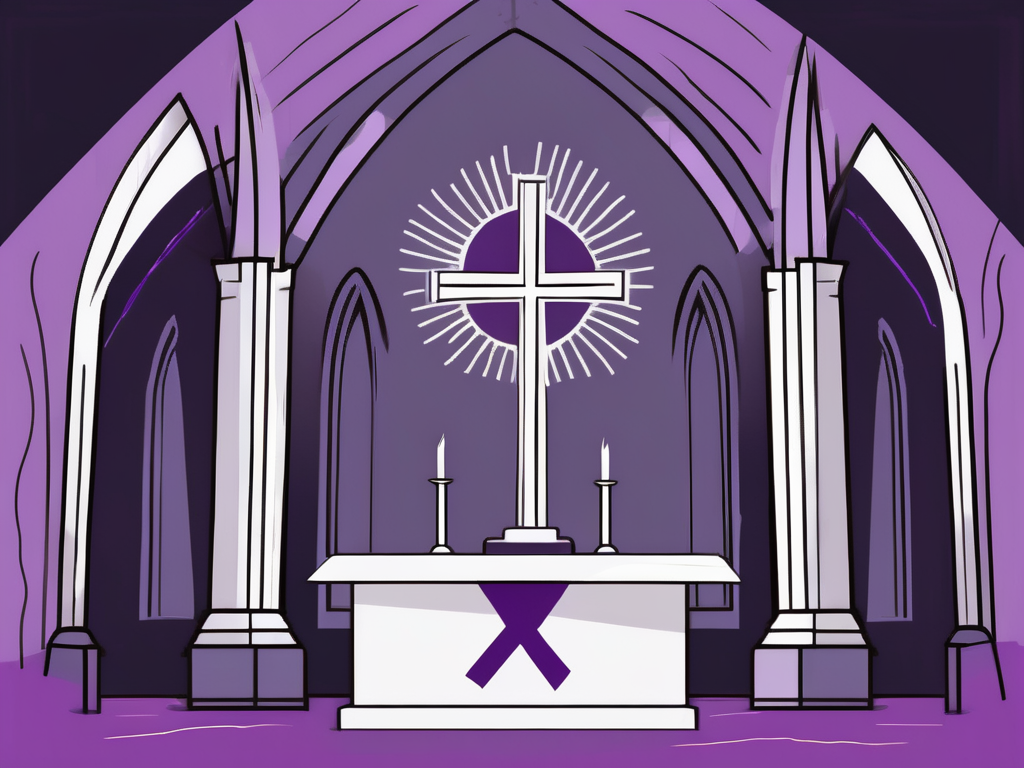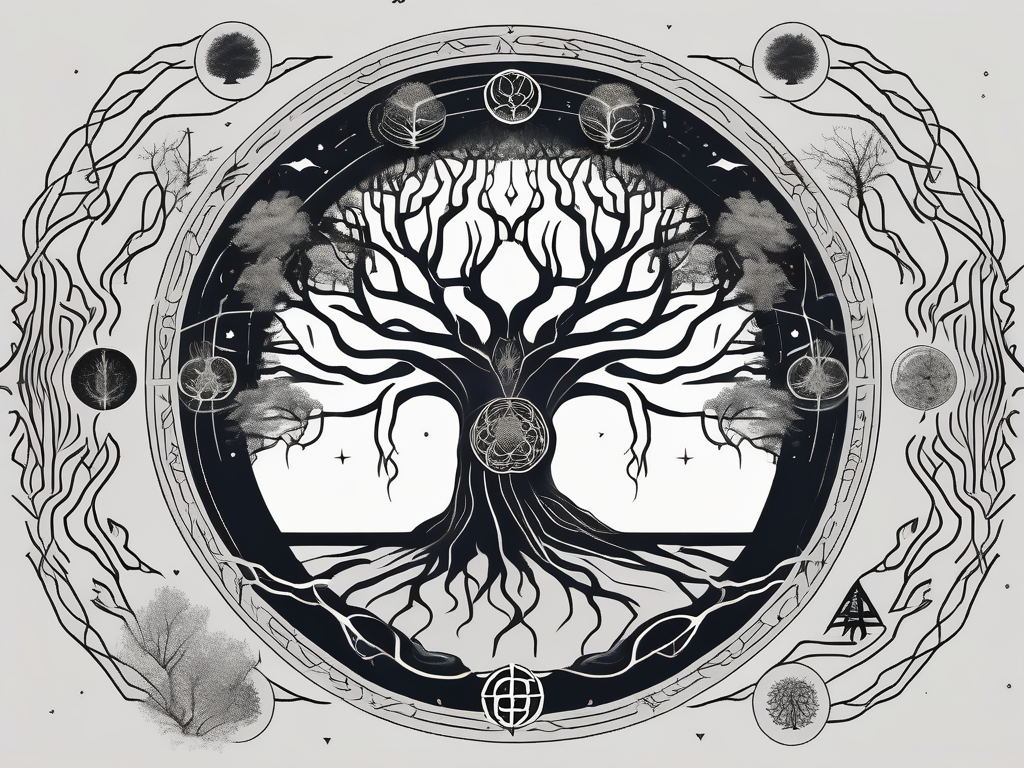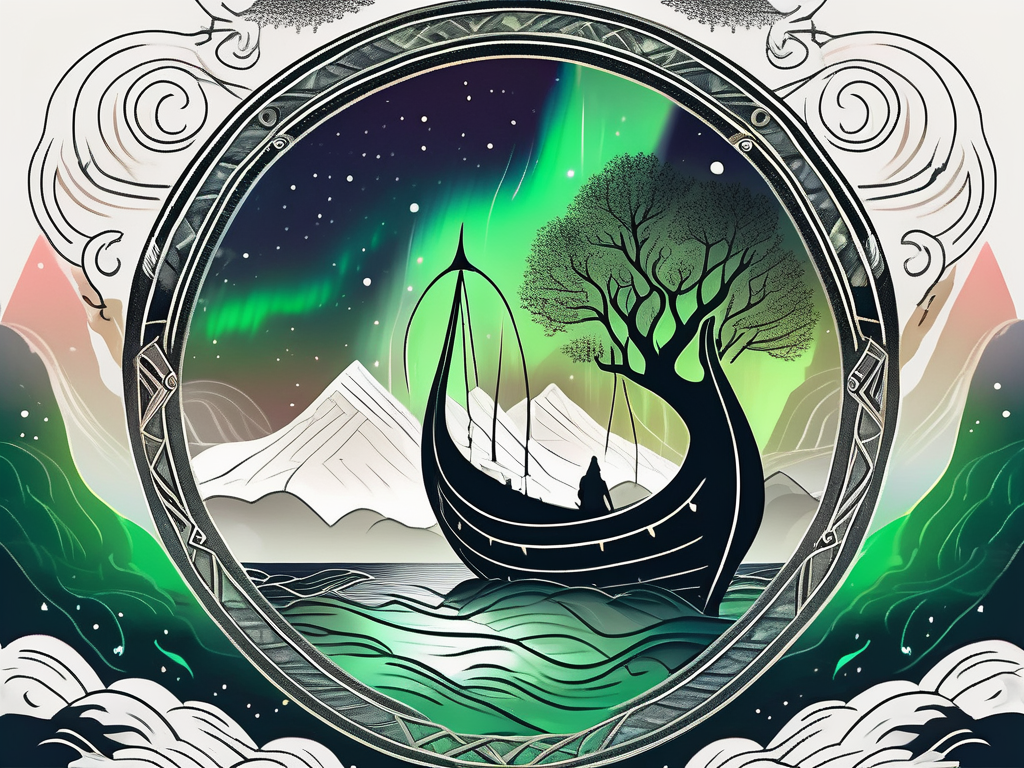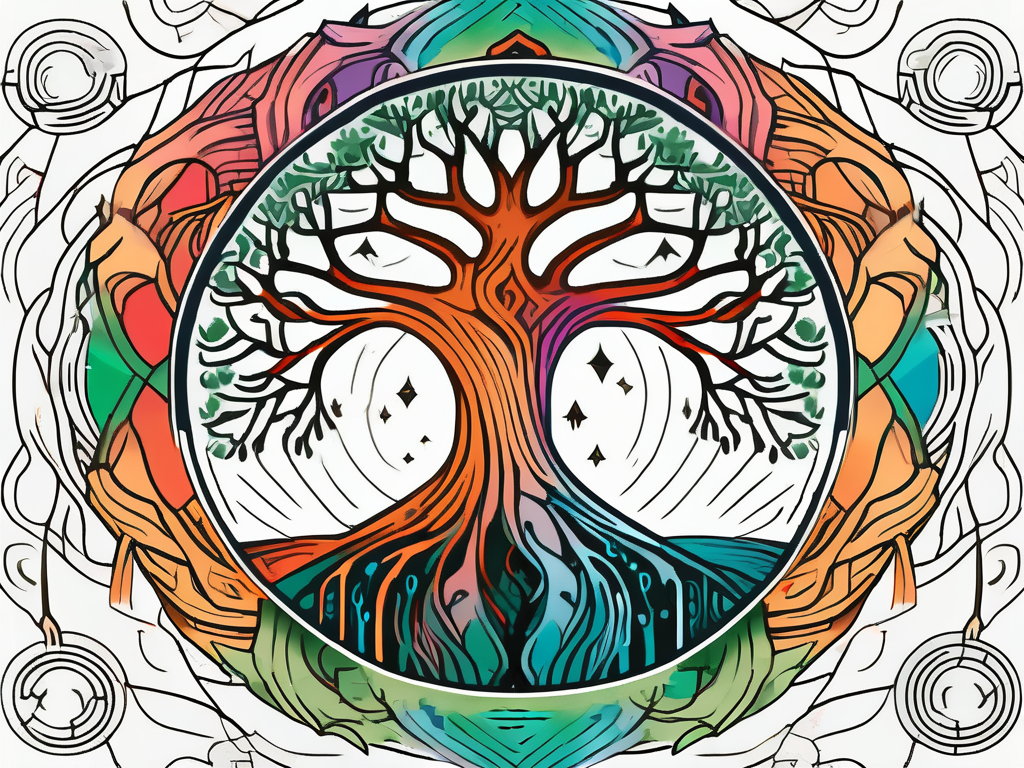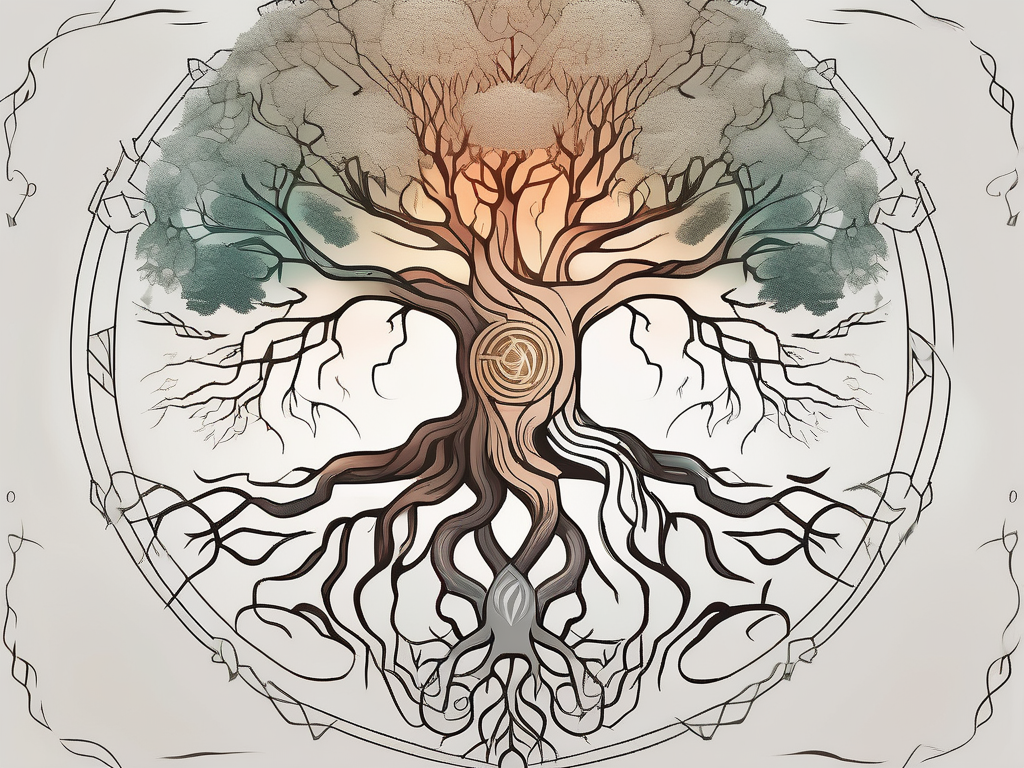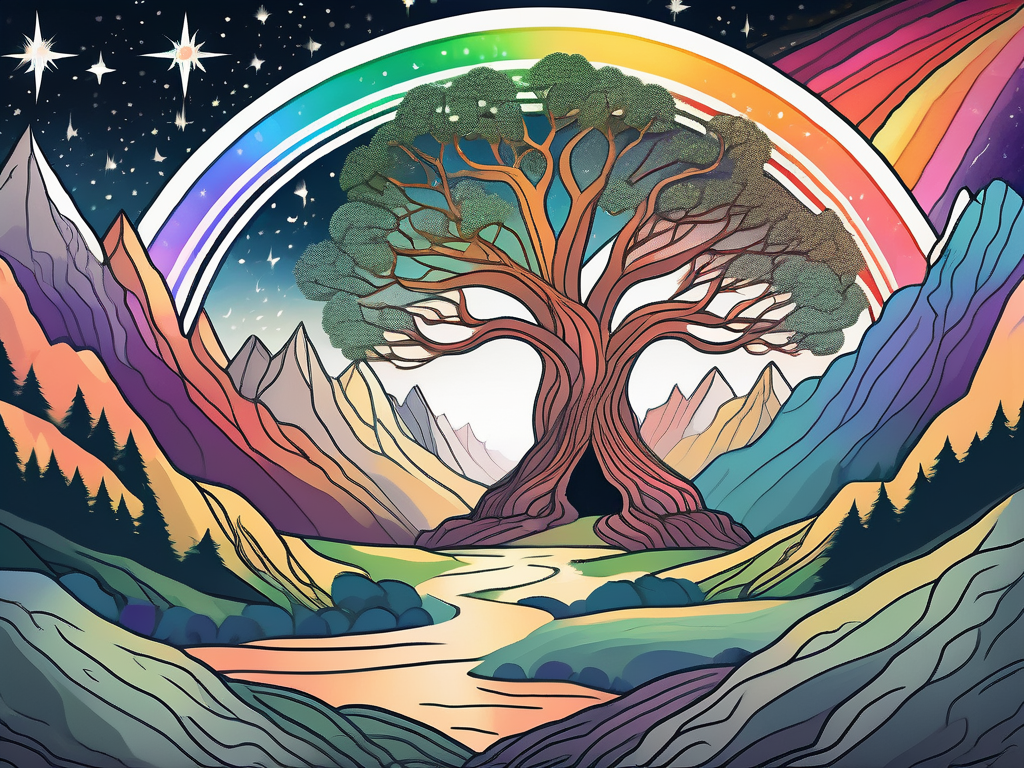The Norse Mythology Tree of Life holds great significance in the ancient Norse cosmology and continues to captivate people’s imaginations to this day. Understanding the conceptual framework and symbolism behind this mystical tree is essential to appreciate its role in Norse mythology and its enduring legacy.
Understanding the Norse Mythology Tree of Life
The Tree of Life, known as Yggdrasil in Norse mythology, represents the interconnectedness of all things in the cosmos. It is a colossal ash tree that forms the center of the Norse cosmos, extending its branches and roots across the Nine Worlds.
The concept of the Tree of Life in Norse mythology is rich with symbolism and meaning. It serves as a powerful representation of the cosmic axis, acting as a bridge between the celestial realm, the earthly realm, and the underworld. This tree is not just a physical entity but a spiritual and mystical force that binds the entire Norse mythological framework together.
One of the key aspects of the Tree of Life’s symbolism is its branches reaching into the heavens. These branches symbolize the connection between the gods and the mortal realm. They serve as a pathway for divine energy and wisdom to flow down to the earthly realm, influencing the lives of mortals and shaping the course of events. The branches are also believed to hold the homes of various mythical creatures and gods, creating a vibrant and diverse ecosystem within the tree.
On the other hand, the roots of Yggdrasil delve deep into the realms of the dead, the giants, and the underworld. These roots represent the connection between the mortal realm and the realm of the deceased. They serve as a conduit for ancestral knowledge and wisdom to flow up from the underworld, influencing the lives of mortals and shaping their understanding of the past and the future.
Moreover, the Tree of Life is often depicted as an evergreen, symbolizing the eternal cycle of life, death, and rebirth. Just as the tree remains green and vibrant throughout the changing seasons, life continues to flourish and renew itself in the Norse mythological framework. This eternal cycle represents the natural order of the cosmos and the interconnectedness of all beings within it.
The Role of the Tree in Norse Mythology
Yggdrasil plays a central and multifaceted role in Norse mythology. It is not merely a passive backdrop but an active participant in the mythological narratives.
One of the most prominent inhabitants of the Tree of Life is the serpent Nidhogg. This serpent gnaws at the roots of the tree, symbolizing the perpetual struggle against chaos and destruction. Nidhogg’s constant presence reminds the gods and mortals alike of the ever-present threat that chaos poses to the cosmic order. The serpent’s ceaseless efforts to undermine the stability of Yggdrasil serve as a reminder of the importance of vigilance and the need to protect the delicate balance of the cosmos.
Furthermore, the gods themselves gather around the roots of the tree to hold their own assemblies. These gatherings serve as a forum for important discussions and decision-making. It is here that the gods deliberate on matters that shape the fate of the cosmos and the lives of mortals. The Tree of Life acts as a sacred meeting place, where divine wisdom is shared, alliances are formed, and conflicts are resolved.
The branches of Yggdrasil also provide a resplendent habitat for various beings. Among them is the wise eagle, perched high on the tree’s lofty heights. This eagle serves as a vigilant observer, watching over all that transpires in the Nine Worlds. Its keen eyesight and wisdom make it a symbol of divine insight and knowledge. From its vantage point, the eagle gains a comprehensive view of the interconnectedness of all things, serving as a guide for mortals seeking a deeper understanding of the cosmos.
In conclusion, the Tree of Life, Yggdrasil, is a complex and multifaceted symbol in Norse mythology. It represents the interconnectedness of all things, serving as a bridge between realms and embodying the eternal cycle of life, death, and rebirth. Its branches and roots are home to various mythical creatures, gods, and spirits, and it plays a central role in the mythological narratives of the Norse cosmos.
The Tree of Life in Norse Cosmology
Expanding upon the significance of Yggdrasil, it is vital to explore the Nine Worlds it encompasses and the creatures that inhabit them.
The Nine Worlds of Norse Mythology
Norse cosmology describes a complex web of interconnected realms. The Tree of Life stands at the center, with branches stretching into each realm. These realms include Asgard, the home of the gods, and Midgard, the realm of humans.
As we delve deeper into the realms, we encounter Vanaheimr, a realm of lush landscapes and vibrant nature, home to the Vanir gods. The Vanir, known for their connection to fertility and abundance, bring life and vitality to this realm.
Jotunheimr, on the other hand, is a realm of giants. These towering beings possess immense strength and power, often depicted as adversaries of the gods. Their presence adds an element of chaos and unpredictability to the Norse cosmology.
Niflheimr, a primordial icy realm, is shrouded in eternal darkness and cold. It is said to be the birthplace of ice and mist, creating a stark contrast to the fiery realm of Muspelheimr. Muspelheimr, a realm of intense heat and flames, is home to the fire giants and fire demons, embodying the destructive forces of nature.
Alfheimr, the realm of the light elves, is a realm of ethereal beauty and enchantment. These beings are known for their radiant appearance and their connection to light and nature. Their presence brings a sense of wonder and magic to the Nine Worlds.
Svartalfheimr, in contrast, is the realm of the dark elves. These mysterious and elusive creatures dwell deep underground, skilled in craftsmanship and magic. Their presence adds an element of secrecy and intrigue to the Norse cosmology.
Lastly, we have Hel, the realm of the dead. This realm is ruled by the goddess Hel, a figure associated with death and the afterlife. It is a realm of shadows and silence, where the souls of the deceased reside.
The Creatures Living in the Tree
Within the vast expanse of Yggdrasil, various mythical creatures find their home. Among them, the wise and cunning dragon Nidhogg, known as the “Dread Biter,” resides at the roots of the tree. Nidhogg, with its insatiable hunger, gnaws at the roots, symbolizing the constant decay and renewal of life.
The sacred squirrel Ratatoskr scurries up and down the tree, carrying messages between the eagle perched at the top and Nidhogg at the bottom. This mischievous creature adds a touch of whimsy to the otherwise solemn Tree of Life.
As we gaze upon the branches and leaves of Yggdrasil, we spot the four stags: Dáinn, Dvalinn, Duneyrr, and Duraþrór. These majestic creatures graze upon the foliage, their antlers reaching towards the heavens. Each stag represents a cardinal direction, emphasizing the interconnectedness of the Nine Worlds.
These creatures, along with countless others, contribute to the vibrant tapestry of Norse mythology, representing different aspects of the natural world and embodying the interconnectedness of all living things. They remind us of the intricate balance and harmony that exists within the realms of Yggdrasil, a testament to the rich and diverse cosmology of the Norse tradition.
The Spiritual Significance of the Tree of Life
Beyond its mythological role, the Tree of Life holds profound spiritual significance, both in ancient times and in modern interpretations.
The Tree as a Symbol of Connection
The Tree of Life serves as a powerful symbol of connection, linking the realms of gods, humans, and the deceased. It represents the interconnected nature of existence and reminds us of the interdependence between all forms of life.
Moreover, the tree offers solace and a sense of continuity, assuring individuals that even in times of change and difficulty, they are part of a greater cosmic whole.
The Tree of Life in Rituals and Ceremonies
Rituals and ceremonies that incorporate the Tree of Life are common in Norse-inspired traditions and contemporary pagan practices. These ceremonies aim to honor the divine, forge spiritual connections, and seek guidance from the wisdom inherent in the tree.
Through these rituals, participants tap into the sacred energies represented by Yggdrasil, fostering a deeper connection with the natural world and the divine forces that govern it.
The Tree of Life in Modern Interpretations
The enduring allure of the Tree of Life extends beyond its mythological and spiritual dimensions, finding its way into literature, art, and popular culture.
The Tree of Life in Literature and Art
This ancient symbol has inspired countless works of literature and art across cultures and time periods. From ancient Viking sagas to modern fantasy novels, the Tree of Life continues to captivate the imagination of authors and readers alike.
Artists, too, have been drawn to depict the beauty and mystery of Yggdrasil. Paintings, sculptures, and intricate tapestries depict the tree in various forms, each capturing a unique interpretation of its significance and enchantment.
The Tree of Life in Popular Culture
The Tree of Life has also found its way into popular culture, featuring prominently in movies, television shows, and video games. It often represents themes of wisdom, balance, and the interconnectivity of all things.
Furthermore, the symbol has been adopted by various organizations and movements as a representation of harmony, environmental consciousness, and spiritual unity.
The Enduring Legacy of the Norse Tree of Life
The Norse Mythology Tree of Life continues to leave a profound impact on contemporary spiritual beliefs and practices.
The Influence on Contemporary Pagan Beliefs
The revival of ancient pagan traditions has led to a resurgence of interest in the Tree of Life. It serves as a powerful symbol within various pagan belief systems, connecting practitioners to the divine and the natural world.
In contemporary pagan rituals, individuals seek guidance and inspiration from Yggdrasil, finding solace and strength in its collective wisdom and overarching presence.
The Tree of Life in Modern Spirituality
Beyond pagan belief systems, the Tree of Life has transcended boundaries and entered the realm of modern spirituality. It resonates with those who seek deeper meaning in their lives and wish to reconnect with the natural world and their inner selves.
Through meditation, contemplation, and spiritual practices, individuals explore the depths of the Tree’s symbolism, finding nourishment, guidance, and a renewed sense of purpose.
In conclusion, the Norse Mythology Tree of Life, Yggdrasil, holds a significant place in ancient Norse cosmology and continues to inspire and intrigue people today. Its symbolism, both mythological and spiritual, transcends time and cultures, embodying the interconnectedness of all beings and offering a glimpse into the profound mysteries of existence. Regardless of one’s beliefs, the Tree of Life remains a powerful symbol of wisdom, connection, and the enduring legacy of Norse mythology.
